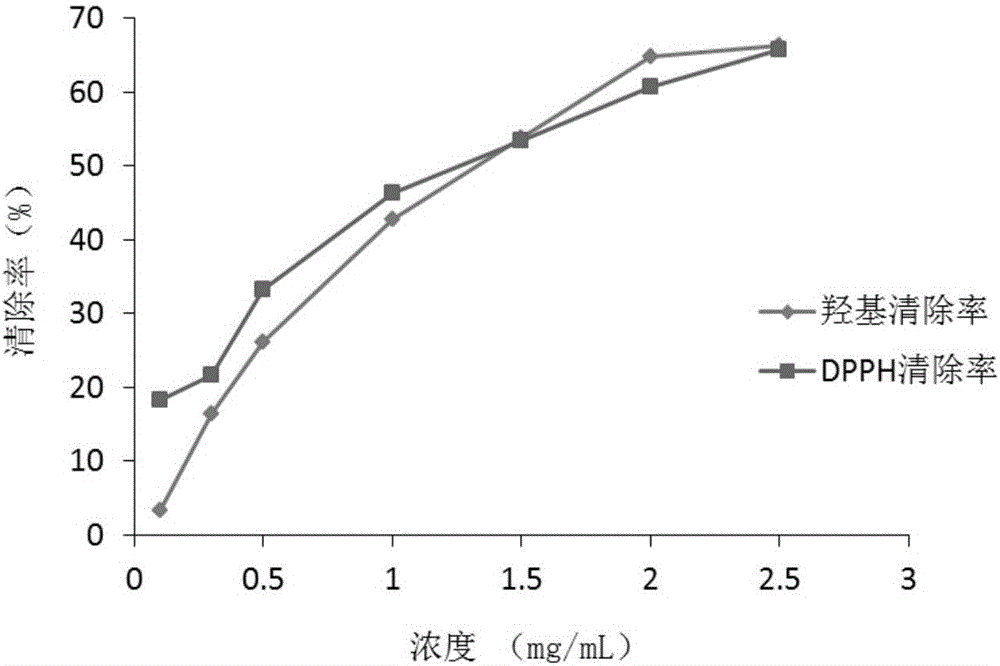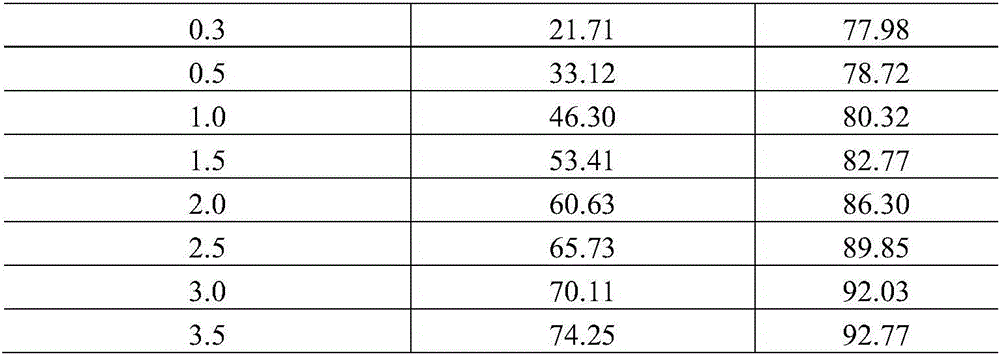Method for extracting polysaccharides from artemisia rupestris
An extraction method, polysaccharide extraction technology, applied in the field of polysaccharide extraction, Xinjiang Artemisia polysaccharide extraction, can solve the problems of unsuitable for large-scale industrial production, complex process, low extraction rate, etc., to achieve accurate and reliable extraction conditions, simple process, and high extraction rate high effect
- Summary
- Abstract
- Description
- Claims
- Application Information
AI Technical Summary
Problems solved by technology
Method used
Image
Examples
Embodiment 1
[0022] (1) Take Artemisia argyi from Xinjiang, place it in 95% ethanol with a solid-to-liquid ratio of 1:4 (g:mL), reflux twice in a hot water bath for 2 hours each time, and dry in the air.
[0023] (2) Pulverize the dried Artemisia chinensis in step (1), pass through a 40-mesh sieve, place in water, and use ultrasonic waves to assist in the extraction of Artemisia xinjiang polysaccharides, the ratio of solid to liquid is 1:30 (g:mL), and the extraction temperature The temperature is 72°C, the extraction time is 2.5h, and the ultrasonic power is 350W. After filtering the extract, concentrate it in a water bath at 80°C.
[0024] (3) Take the concentrated extract in step (2), add 4 times the concentration of the extract volume to 95% ethanol for alcohol precipitation, the alcohol precipitation time is 12h, and centrifuge at 4000r / min for 10min to obtain the precipitate and dry it to obtain Artemisia polysaccharides from Xinjiang.
[0025] (4) Deproteinization using HPD-300 dyn...
Embodiment 2
[0032] (1) Take Artemisia argyi from Xinjiang, place it in 95% ethanol with a solid-to-liquid ratio of 1:4 (g:mL), reflux twice in a hot water bath for 2 hours each time, and dry in the air.
[0033] (2) Pulverize the dried Artemisia chinensis in step (1), pass through a 40-mesh sieve, place in water, and use ultrasound to assist extraction of Artemisia xinjiang polysaccharides, the ratio of solid to liquid is 1:20 (g:mL), and the extraction temperature The temperature is 70°C, the extraction time is 2.5h, and the ultrasonic power is 350W. After filtering the extract, concentrate it in a water bath at 80°C.
[0034] (3) Take the concentrated extract in step (2), add 4 times the concentration of the extract volume to 95% ethanol for alcohol precipitation, the alcohol precipitation time is 12h, and centrifuge at 4000r / min for 10min to obtain the precipitate and dry it to obtain Artemisia polysaccharides from Xinjiang.
[0035] (4) Deproteinization using HPD-300 dynamic macropor...
Embodiment 3
[0038] (1) Take Artemisia argyi from Xinjiang, put it in 95% ethanol with a solid-to-liquid ratio of 1:5 (g:mL), reflux twice in a hot water bath for 2 hours each time, and dry in the air.
[0039] (2) Pulverize the dried Artemisia chinensis in step (1), pass through a 40-mesh sieve, place in water, and use ultrasonic waves to assist extraction of Artemisia sativa polysaccharides, the ratio of solid to liquid is 1:10 (g:mL), and the extraction temperature The temperature is 80°C, the extraction time is 2.5h, and the ultrasonic power is 350W. After the extract is filtered, it is concentrated in a water bath at 80°C.
[0040] (3) Take the concentrated extract in step (2), add 4 times the concentration of the extract volume to 95% ethanol for alcohol precipitation, the alcohol precipitation time is 12h, and centrifuge at 4000r / min for 10min to obtain the precipitate and dry it to obtain Artemisia polysaccharides from Xinjiang.
[0041](4) Utilize HPD-300 dynamic macroporous adso...
PUM
 Login to View More
Login to View More Abstract
Description
Claims
Application Information
 Login to View More
Login to View More - R&D
- Intellectual Property
- Life Sciences
- Materials
- Tech Scout
- Unparalleled Data Quality
- Higher Quality Content
- 60% Fewer Hallucinations
Browse by: Latest US Patents, China's latest patents, Technical Efficacy Thesaurus, Application Domain, Technology Topic, Popular Technical Reports.
© 2025 PatSnap. All rights reserved.Legal|Privacy policy|Modern Slavery Act Transparency Statement|Sitemap|About US| Contact US: help@patsnap.com



